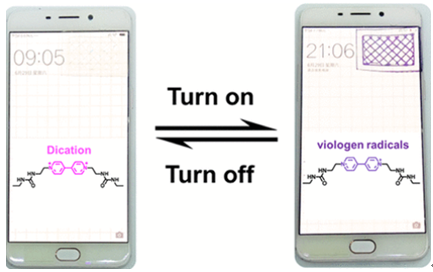Welcome to College of Chemistry, Chemical Engineering and Materials Science of Soochow
University
Printable UV-Light Sensor for Human Eye Protection
Lili Liu†, Yongyuan Ren†, Ji Pan, Ziyang Liu, Bing Wu, and Feng Yan*(严锋)
Department of Polymer Science and Engineering, College of Chemistry, Chemical Engineering and Materials Science, Soochow University, Suzhou 215123, China
† L.L. and Y.R. contributed equally to this work
ACS Appl. Mater. Interfaces 2020, 12, 1495--1503
Light-emitting diode based electronic screens emit near-ultraviolet radiation, which causes harm to the human eye after prolonged exposure. Thus, it is of paramount importance to prepare a sensitive and adjustable visible near-ultraviolet sensor for retinal warning. Herein, a series of bipyridine derivatives were synthesized to investigate effects of substituent groups and anions on photochromic properties via both experimental and theoretical studies. The introduction of dual hydrogen bonding urea onto substituted groups significantly accelerated the photochromic rate due to strong intermolecular interactions, which reduces molecular spacing and promotes the electron-transfer effect. Moreover, the photochromic rate was tuned by changing the size of the anion. Larger anions widen the molecular spacing and weaken the electron transfer and eventually lead to a decrease in the photochromic rate. Finally, bipyridine derivatives were printed on a polyethylene terephthalate film or paper as a sensitive, adjustable, and visible sensor to monitor near-ultraviolet radiation emitted by an light-emitting diode screen.

链接:https://pubs.acs.org/doi/10.1021/acsami.9b17391